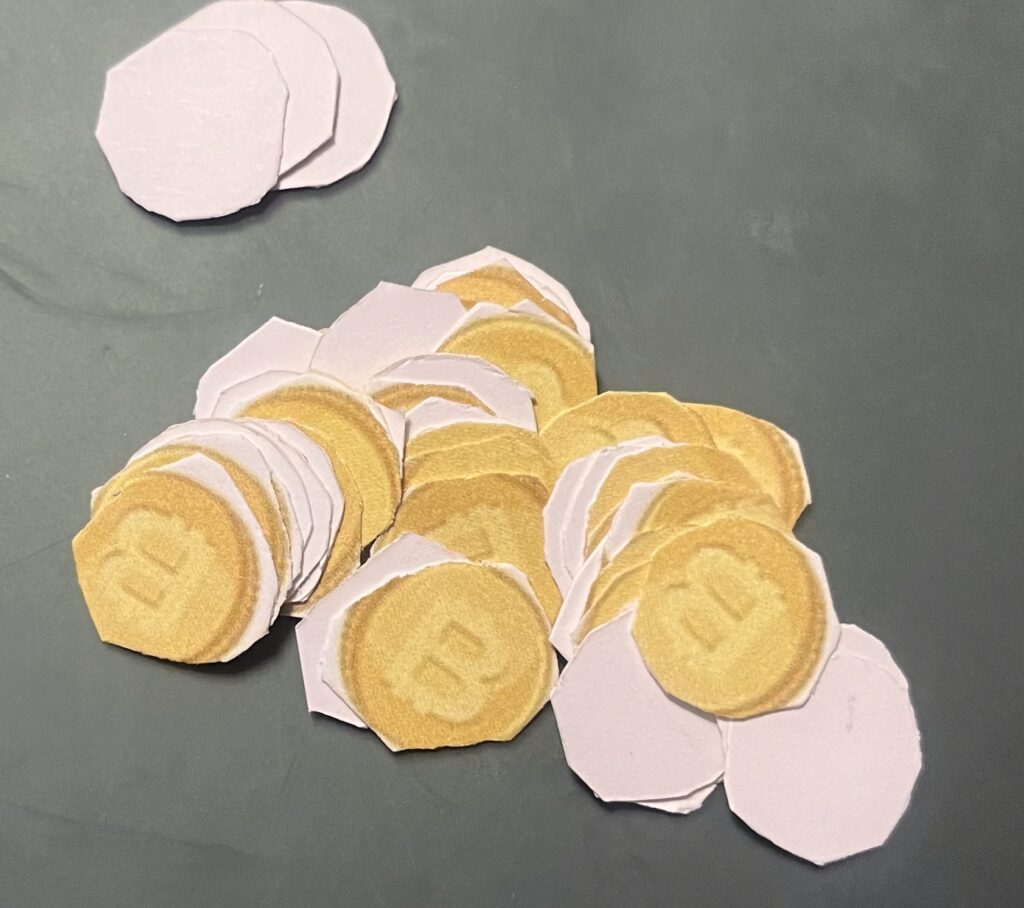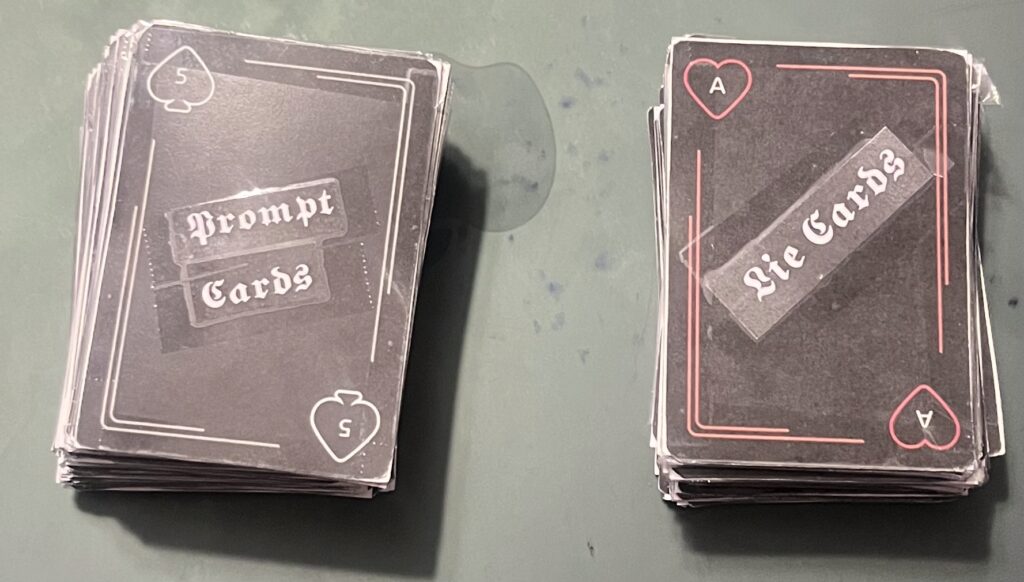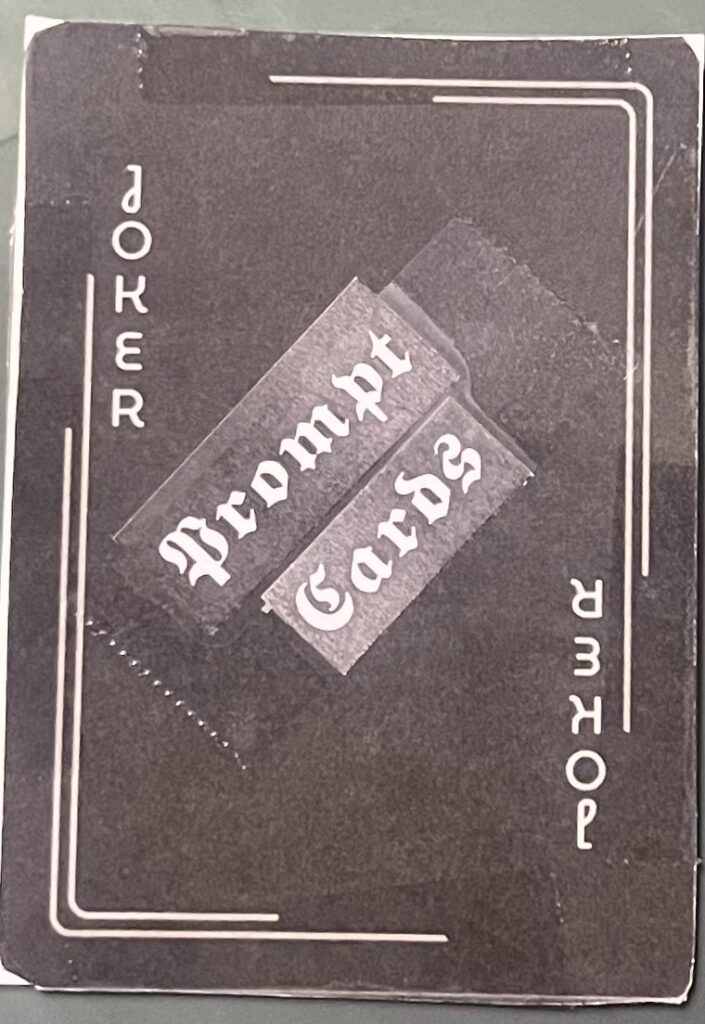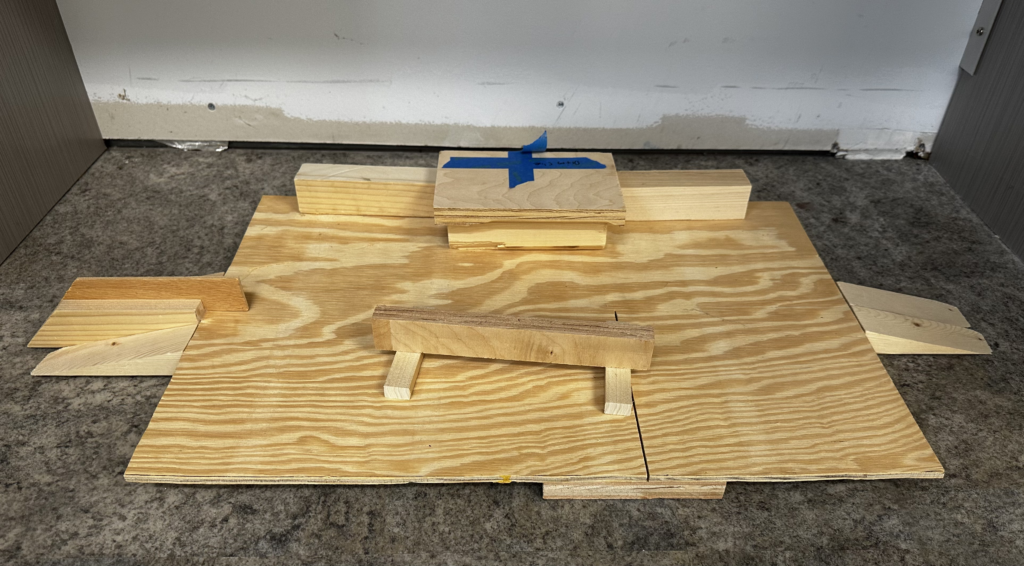Question Set 1
- What Mechanics would you like to use for a game with a theme that revolves around being the size of a nanometer? I would play around with the scaling of things and make the player have to change sizes to fit through different objects.
- Who are you making games for? I am making games for my little brother and my roommate.
- Who will be your playtesters outside of class? My older brother my roommate and my teammates.
Question Set 2
- Can you think of a game you were able to play without referring to the rules? Rock paper scissors, connect 4, black jack, 31 (scat), LCR, euchre
- How do you define what a game is? I would say its up to the creator. You can make a game out of pretty much anything. As long as there are set rules and and end goal with a winner. There doesn’t always have to be a loser.
- What features can make your games more intuitive? Keeping the rules simple and a clear explanation of the rules.
Question Set 3
- What was your gateway game? What do you play to introduce others to gaming? I think a good gateway game is mario kart or something on the wii.
- What features do gateway games share? I feel like gateway games have to have a somewhat easier difficulty level so that they can win and get hooked on that winning feeling. They also should have lots of pretty colors and look pleasing to the eye.
- What are the 10 beautiful mechanics and what should you aim for with your own? You should aim to make the game easier fir the player to do little things in the game. Such as when you killed someone in Fortnite early in the games life. You has to pick up all the individual things that they had. Later on in the games life when you killed someone they made it so that if you just walk over them you collect their stuff. This speeds up the game a lot more.
- How does luck and strategy factor in to game play? Luck and strategy are very different yet go hand in hand. One could get lucky because they used good strategy or one could get lucky with bad strategy.
Game Ideas thats can be played using cards
game 1: Players use cards representing the four classical elements—Fire, Water, Earth, and Air—to battle against each other. Each element has strengths and weaknesses, and players must strategically play their cards to defeat their opponent’s cards. The goal is to win the most rounds by having the stronger element in play.
Card Types :
Fire: Beats Earth and Air, but loses to Water.
Water: Beats Fire and Earth, but loses to Air.
Earth: Beats Air and Water, but loses to Fire.
Air: Beats Fire and Water, but loses to Earth.
Game 2: this game is for two people. One player picks up a card from the standard 52 card deck. The next player has to guess higher or lower with ace being the lowest and king being the highest.
Game 3 : This is played with a standard 52 card deck. You deal the cards out to all players in a clockwise direction till there are no cards left. Each player picks a card and puts it in the center face down if someone spots a match to their card they shout “Match” and that player picks up all the cards in the middle. The winner has the most cards. If two players say match at the same time then it is a tie and the next round is double or nothing.
Game 4: Be the first player to make a hand totaling exactly 10 points. Use a standard 52-card deck. Remove the face cards (Jacks, Queens, Kings) from the deck. Aces are worth 1 point. Shuffle the remaining cards and deal 3 cards to each player. The rest of the deck goes face down as the draw pile.
Rules
Each player looks at their hand and tries to make a total of **exactly 10 points** using any combination of their 3 cards. On each turn, a player may: Keep their hand and pass their turn. Draw a new card from the deck and discard one from their hand to keep a total of 3 cards. The game continues with players drawing, discarding, and trying to make exactly 10 points. The first player to reach exactly 10 points says “Ten!” and wins the game.
Game 5 Use a standard 52-card deck. Shuffle the deck and deal 5 cards to each player. Place the remaining deck face down in the center as a draw pile. Players take turns drawing a card from the draw pile and discarding one card from their hand. The goal is to collect 5 cards of the same suit (hearts, diamonds, clubs, or spades). Players must always keep 5 cards in their hand after every draw and discard. The game continues with players drawing and discarding until one player has 5 cards of the same suit. The first player to collect 5 cards of the same suit wins the game!
















